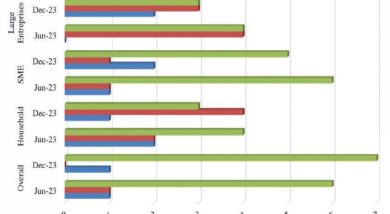Treasury plans to borrow K397bn domestically
Treasury plans to borrow K397.63 billion from the domestic market in the last quarter of the year, a local debt issuance calendar shows.
This is despite government raising less funds on the Treasury securities’ primary market than indicated in the previous debt issuance calendar.

But, according to the local debt issuance calendar for October to December published by the Reserve Bank of Malawi (RBM), Treasury plans to borrow K181.66billion through Treasury Bills and K215. 96 billion through Treasury notes.
The figure is about 70.57 percent of the K565.4 billion that government plans to borrow from the domestic market in the 2021/22 financial year, which runs till March 2022.
Meanwhile, tight liquidity conditions on the domestic market have hit government securities auctions as evidenced by continued under-allotment of government securities relative to planned issuance on Treasury securities auctions for this 2021/22 fiscal year.
For instance, RBM figures show that, cumulatively, in the 2021/22 fiscal year, Treasury securities allotment stands at 90 percent of subscription and 44.5 percent of planned issuance as per the issuance calendar.
Bridgepath Capital Limited chief executive officer Emmanuel Chokani said in an interview recently the development is a true reflection of the liquidity situation on the market.
He said: “Liquidity is currently tight on the market. For instance, the discount window borrowing has been high and interbank levels are also low, which is an indication that the market is struggling with liquidity issues.”
According to Chokani, the development could, in terms of government obligations and budget implementation, necessitate an upward revision of the yield to incentivise the public to move resources from other investments towards the government borrowing.
“This will increase domestic government debt. But failure to achieve the sought borrowing may result in further strains on meeting budget commitments and project delays, among others, given the challenges of raising resources in the current environment,” he said.
Troubled by the growing public debt levels, Treasury has lately turned to the domestic market to borrow through issuance of T-bills—monetary instruments used by the government to borrow money from the public— though analysts have argued this could choke the market.
Currently, Malawi’s debt stock has been on the rise—hitting a record K4.76 trillion by December last year, which is double the value of the last financial year’s fiscal plan, which was pegged at K2.3 trillion.
Meanwhile, the World Bank has expressed concern over rising domestic debt which previously pushed Malawi into high overall risk of debt distress and is budgeted to continue rising sharply.
Treasury has continued to finance fiscal deficits through domestic borrowing, reaching 5.9 percent of GDP and a budgeted 7.8 percent in the last and present financial years respectively.
The World Bank has since projected that domestic debt could exceed 30 percent of GDP by the end of this financial year and that the external debt-to-GDP ratio may also increase from its current level of 21 percent due to financing needs for Covid-19 response, as well as depreciation of the exchange rate.




